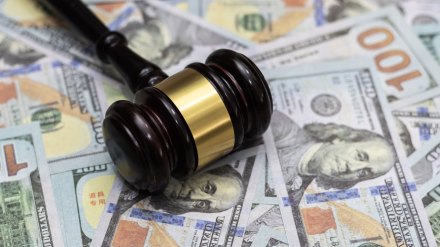Our top 10 tax developments for churches and clergy 2024 are based on a number of legislative, administrative, and judicial tax developments in 2023, including excess benefit transactions and intermediate sanctions.
Here they are:
1. No change to the housing allowance
In March 2019, a federal appeals court rejected an atheist group’s challenge to the constitutionality of the housing allowance. The atheist group did not appeal this ruling, and there have been no further legal challenges.
2. Revoking an exemption from Social Security
Congress has created three limited windows of time since 1977 to allow ministers who exempted themselves from self-employment taxes by filing a timely form 4361 with the IRS to revoke their exemption. The latest was in 1999. Congress did not pass any bills in 2023 that would have authorized ministers to revoke an exemption from Social Security.
However, the Internal Revenue Service (IRS) in 1970 allowed an exempt minister to revoke his exemption on the ground of a mistake (Revenue Ruling 70-197).
In addition, section 4.19.6.4.11.3 (02-13-2020) of the IRS’s Internal Revenue Manual explicitly recognizes that, under some conditions, ministers who have exempted themselves from self-employment taxes solely for economic reasons can revoke their exemption.
3. Working after retirement in 2024
Many churches employ retirees who are receiving Social Security benefits. People younger than full retirement age may have their Social Security retirement benefits cut if they earn more than a specified amount.
Full retirement age (the age at which you are entitled to full retirement benefits) for people born between 1943 and 1954 is 66 years.
If you are under full retirement age for the entire year, $1 is deducted from your benefit payments for every $2 you earn above the annual limit. For 2024, that limit is $22,320.
In the year you reach full retirement age, your monthly benefit payments are reduced by $1 for every $3 you earn above a different limit. For 2024, that limit is $59,520, but only earnings before the month you reach full retirement age are counted.
4. Inflation adjustments for 2023 tax returns
Some tax benefits are adjusted for inflation for 2023 tax returns (filed in 2024). Key changes affecting 2023 tax returns include the following:
- The Alternative Minimum Tax exemption amount for tax year 2023 increases to $81,300 for single taxpayers and $120,000 for married persons filing jointly. The exemption amount for single persons (and heads of household and married persons filing separately) begins to phase out at $578,150, and the exemption amount for married couples filing jointly begins to phase out at $1,156,300.
- For estates of any decedent passing away in calendar year 2023, the basic exclusion amount was $12,920,000.
- For 2023, the foreign earned income exclusion will be $120,000.
- The maximum earned income credit amount will be $7,430 for taxpayers with three or more qualifying children for 2023.
- The IRS’s recommended mileage rate for miles driven for church-related business increased to 67 cents per mile on January 1, 2024.
- The mileage rate for miles driven for medical purposes, and for moving expenses for members of the armed forces, decreases to 21 cents per mile for 2024.
- The charitable mileage remains at 14 cents for all of 2024.
5. The maximum earned income credit amount will be $7,430 for taxpayers with three or more qualifying children for 2023.
You may be able to claim the earned income credit for 2023 (taxes filed in 2024) if:
- you do not have a qualifying child and you earned less than $17,640 ($24,210 if married);
- a qualifying child lived with you and you earned less than $46,560 ($53,120 if married filing jointly);
- two qualifying children lived with you and you earned less than $52,918 ($59,478 if married filing jointly); or
- three or more qualifying children lived with you and you earned less than $56,838 ($63,698 if married filing jointly).
The maximum earned income credit for 2023 is:
- $600 with no qualifying child;
- $3,995 with one qualifying child;
- $6,604 with two qualifying children; and
- $7,430 with three or more qualifying children.
Advantage Member exclusive: The Seven Most Common Tax Mistakes Churches and Pastors Make
In this 20-minute companion video, Rich Hammar covers the seven most common tax mistakes churches make. Errors include failing to set a housing allowance, misclassifying love gifts, or trying to avoid paying FICA. And all have repercussions for pastors and churches.
6. Simplified definition of a highly compensated employee
A number of tax-favored provisions in the tax code do not apply if there is discrimination in favor of highly compensated employees. These provisions include:
- simplified employee pensions (SEPs),
- 403(b) tax-sheltered annuities (churches and qualified church-controlled organizations are exempt from this nondiscrimination rule),
- qualified employee discounts,
- cafeteria plans,
- flexible spending arrangements,
- qualified tuition reductions,
- employer-provided educational assistance, and
- dependent-care assistance.
For 2023, a highly compensated employee was one who (1) was a 5-percent owner of the employer at any time during the current or prior year (this definition will not apply to churches), or (2) had compensation for the previous year in excess of $150,000 and, if an employer elects, was in the top 20 percent of employees by compensation.
7. Nonprofit organization that operated a coffee shop and restaurant stripped of its tax-exempt status by the IRS
A charity that operated a restaurant and coffee shop was granted tax-exempt status by the IRS.
The exemption was granted on the basis that it would be operated to assist formerly incarcerated persons reenter society. However, the IRS found it operated largely for commercial purposes in a manner similar to for-profit entities. The IRS, therefore, revoked the charity’s tax-exempt status.
The IRS also noted that the internal controls of the organization were not adequate. That is because the founder and executive director was in charge of opening the organization’s mail and making deposits. That person was also in charge of writing and signing checks.
PLR 202321005.
8. IRS to stop unannounced taxpayer visits
The IRS announced it is ending most unannounced visits to taxpayers by revenue officers (ROs). This was done to reduce public confusion and enhance overall safety measures for taxpayers and employees.
ROs will now send an appointment letter to schedule an initial or follow-up meeting with the taxpayer.
Unannounced RO visits will only be done in a few unique circumstances.
The rest of the IRS collection process will remain the same, and will depend on the facts and circumstances of the case.
Information on the IRS collection process is available under “Topic No. 201, The Collection Process” at IRS.gov.
ROs are unarmed civil agency employees whose duties include visiting households and businesses to help taxpayers resolve their account balances.
Their job is to collect taxes that are delinquent and have not been paid to the IRS. They also secure tax returns that are overdue from taxpayers.
The IRS has about 2,300 ROs.
ROs carry two forms of official credentials with a serial number and their photo.
Taxpayers have the right to see each of these credentials. They can also request an additional method to verify their identification. Taxpayers should know they have a tax issue before these visits occur, since multiple mailings occur.
IRS Criminal Investigation special agents are the only armed IRS personnel. They always present their law enforcement credentials when conducting investigations.
FS-2023-17.
9. IRS addresses inurement, intermediate sanctions, and the definition of a church (PLR 202317022)
A private letter ruling (PLR) issued by the IRS in 2023 to a tax-exempt entity claiming to be a church while providing behavioral health services addresses three important topics:
- Inurement
- Excess benefit transactions
- What is a church?
The IRS analysis of these three topics is summarized below.
Inurement
Churches must satisfy several conditions to enjoy the benefits of exemption from federal income taxation. One of these conditions is that none of the net earnings of a church can “inure” to the benefit of an officer or director (or a relative of an officer or director) other than reasonable compensation. The IRS explained this “inurement” requirement in the PLR:
Churches and religious organizations, like all tax-exempt organizations, are prohibited from engaging in activities that result in inurement of the church’s or organization’s income or assets to insiders (i.e., persons having a personal and private interest in the activities of the organization).
Insiders could include the minister, church board members, officers, and in certain circumstances, employees.
Examples of prohibited inurement include the payment of dividends, the payment of unreasonable compensation to insiders, and transferring property to insiders for less than fair market value.
The prohibition against inurement to insiders is absolute; therefore, any amount of inurement is, potentially, grounds for loss of tax-exempt status. In addition . . . the insider involved may be subject to excise taxes. See the discussion of excess benefit transactions below. Note that prohibited inurement does not include reasonable payments for services rendered, or payments that further tax-exempt purposes, or payments made for the fair market value of real or personal property.
Excess benefit transactions
Excess benefit transactions are common among churches and expose ministers and possibly church officers and board members to significant penalties under section 4958 of the tax code. Note that these penalties are assessed against the recipient of the excess benefit, not the church.
The PLR shows how much church leaders have ignored this issue, needlessly exposing “disqualified persons” (defined below) to significant penalties.
Let’s review the basics.
Section 4958 of the tax code imposes an excise tax on a “disqualified person” who engages in an “excess benefit transaction” with a tax-exempt charity. Section 4958(c)(1)(A) defines an excess benefit transaction to mean:
Any transaction in which an economic benefit is provided by an applicable tax-exempt organization directly or indirectly to or for the use of any disqualified person if the value of the economic benefit provided exceeds the value of the consideration (including the performance of services) received for providing such benefit.
An applicable tax-exempt organization is defined to include an organization described in tax code section 501(c)(3), including churches and other religious organizations.
Section 4958(a)(1) imposes on each excess benefit transaction an excise tax “equal to 25 percent of the excess benefit” and provides that this tax “shall be paid by any disqualified person . . . with respect to such transaction.”
If the excess benefit transaction is not corrected in a timely fashion, the disqualified person is liable for a second-tier tax equal to 200 percent of the excess benefit.
One court has noted that Congress enacted section 4958 not to collect revenue, but rather, to “deter insiders of an organization from using their positions of influence to receive unreasonable compensation.”
Before the enactment of section 4958, “if an organization . . . did not comply with the rules regarding tax exemption, the [government’s] only recourse was to revoke the organization’s exemption.”
Because revocation falls on the organization, rather than the benefited individuals, Congress recognized the need for intermediate sanctions including the 25-percent and 200-percent penalties described above. Intermediate sanctions are intended to “deter malfeasance and incentivize insiders to restore the charity to the status quo” prior to an excess benefit transaction.
Intermediate sanctions only apply to “disqualified persons,” which include:
- Voting members of the governing body, presidents, chief executive officers, chief operating officers, treasurers, and chief financial officers. The category of “treasurers and chief financial officers” includes “any person who, regardless of title, has ultimate responsibility for managing the finances of the organization.” A person who serves as treasurer “has this ultimate responsibility unless the person demonstrates otherwise.”
- Family members of disqualified persons, down to the level of great-grandchildren, with respect to a charity.
In the PLR, the IRS concluded that the petitioner was a disqualified person based on both categories. She served as a director and executive officer of the charity and was the spouse of a disqualified person (the president).
The “contemporaneous substantiation” requirement can be satisfied in two ways—by timely reporting or by “other written contemporaneous evidence.” Timely reporting occurs if the organization reports a payment to the disqualified person as compensation on a Form W-2 or a Form 990 filed before the IRS commences its examination.
Timely reporting also occurs if the disqualified person reports the payment as income on an original or amended Form 1040 filed before the earlier of the date on which the IRS commences its examination or supplies written documentation of a potential excess benefit transaction.
The “contemporaneous substantiation” requirement can also be satisfied by “other written contemporaneous evidence” showing that “the appropriate decision-making body or an officer authorized to approve compensation approved a transfer as compensation for services in accordance with established procedures.”
Such evidence includes “an approved written employment contract executed on or before the date of the transfer,” other documentation showing that “an authorized body contemporaneously approved the transfer as compensation for services,” and contemporaneous written evidence establishing “a reasonable belief by the . . . organization that a benefit was a nontaxable benefit.”
In reviewing the case about the tax-exempt entity claiming to be a church while providing behavioral health services, the IRS noted in the PLR:
The organization has been involved in multiple excess benefit transactions with major officers. There have been several incidents where organization funds have been used to purchase property for officers of the organization. The organization has failed to establish that cash and expenses were not used for the benefit of the organization’s officers. There are additional incidences of benefits that also flow to the officers’ family members.
Penalties (intermediate sanctions). Tax code section 4958(a) imposes a first-tier tax equal to 25 percent of the excess benefit, payable by the disqualified person. Section 4958(b) provides that, if a first-tier tax is imposed “and the excess benefit involved in such transaction is not corrected within the taxable period, there is hereby imposed a tax equal to 200 percent of the excess benefit involved.” This second-tier tax, like the first-tier tax, is imposed on the disqualified person. The second-tier tax is not discretionary with the IRS but is statutorily mandated.
Such cases are important because they demonstrate the continuing relevance of intermediate sanctions and excess benefit transactions in the life of virtually every church, and the need to take them seriously. They also underscore the need for careful compensation planning and practices.
Further, note that the IRS deems any taxable fringe benefit provided to an officer or director of a tax-exempt charity (including a church), or a relative of such a person, to be an automatic excess benefit that may trigger intermediate sanctions, regardless of the amount of the benefit, unless the benefit was timely reported as taxable income by either the recipient or the employer.
This makes it essential for churches to correctly report taxable income paid to staff, since a failure to report taxable benefits as taxable income can lead to the assessment of “automatic” intermediate sanctions against the recipient.
What is a “church”?
In the PLR, the IRS concluded that the charity was not a church. The tax code uses the term church in many contexts, including the following:
- charitable giving limitations,
- various retirement plan rules,
- unrelated business income tax,
- exemption from applying for exemption from federal income taxation,
- unemployment tax exemption,
- exemption from filing annual information returns (Form 990), and
- restrictions on IRS examinations.
Despite numerous references to the term “church,” the tax code provides no definition. This is understandable; a definition that is too narrow may interfere with the constitutional guaranty of religious freedom. Meanwhile a definition that is too broad may encourage abuses in the name of religion.
The United States Supreme Court has noted that “the great diversity in church structure and organization among religious groups in this country . . . makes it impossible, as Congress perceived, to lay down a single rule to govern all church-related organizations.” St. Martin Evangelical Lutheran Church v. South Dakota, 451 U.S. 772 (1981).
In the absence of any meaningful guidance in the tax code and regulations, the courts have developed various approaches to determine whether an organization qualifies as a church.
Several courts have applied a fourteen-criteria standard introduced in 1977 by Jerome Kurtz, then commissioner of the IRS, to determine whether an organization is a church. The Tax Court has applied the fourteen criteria in several cases. They are:
- A distinct legal existence
- A recognized creed and form of worship
- A definite and distinct ecclesiastical government
- A formal code of doctrine and discipline
- A distinct religious history
- A membership not associated with any church or denomination
- An organization of ordained ministers
- Ordained ministers selected after completing prescribed studies
- A literature of its own
- Established places of worship
- Regular congregations
- Regular religious services
- Sunday schools for religious instruction of the young
- Schools for the preparation of its ministers.
One court noted:
Due partly to concerns over a mechanical application of rigid criteria to a diverse set of religious organizations, some courts have deemed a few of the criteria within the fourteen-factor IRS test to be of special, or “central” importance. The leading case is American Guidance, in which the United States District Court for the District of Columbia articulated the following standard: “While some of the [fourteen criteria applied by the IRS] are relatively minor, others, e.g., the existence of an established congregation served by an organized ministry, the provision of regular religious services and religious education for the young, and the dissemination of a doctrinal code, are of central importance.”
A federal appeals court made the following observation regarding the fourteen criteria:
We are mindful of [the plaintiff’s] claim that the criteria discriminate unfairly against rural, newly formed churches which lack the monetary resources held by other churches. [The plaintiff] is not alone in this position. In large part it is for this reason we have emphasized what we view as the core requirements of the fourteen criteria.” Spiritual Outreach Society v. Commissioner, 927 F.2d 335 8th Cir. 1991.
The IRS has acknowledged that “no single factor is controlling, although all [fourteen] may not be relevant to a given determination.” These criteria have been recognized by a number of courts.
Because of the ambiguity of several of the fourteen factors, any clarifications provided by the IRS or the courts are helpful. The IRS recently did just that. Note that the IRS addressed all but one of the fourteen criteria:
(1) A distinct legal existence.
The IRS concluded that the organization was incorporated and has a legal existence as noted in its articles of incorporation and bylaws. However, “as illustrated by the undocumented cash withdrawals, real estate transactions for personal use, and other benefits flowing to [the president] and her family members, the organization is operated as a private business of a few individuals. The distinct legal existence of the organization exists in paper only, but not in operation.’’
(2) A recognized creed and form of worship.
The IRS noted that the organization did not provide a written creed or formal code of doctrine. Further, “in response to a question regarding its form of worship, the organization provided minimal information, which showed that its worship services are secondary or incidental to its overall operations.”
(3) A definite and distinct ecclesiastical government.
The organization provided the following statement to show this attribute:
The Board of Directors with the Chairman as the head; The Pastor is the Spiritual Director; Assistant Pastors in charge of the following ministries: Welfare, Healing, Counseling, and Director for Administration. . . .
The organization also provided its minutes of a recent meeting, noting that the meeting began with prayers. The minutes discuss various activities, staff and volunteers, financials, projects and business reports, and the associated expenses. The IRS concluded: “While the organization appears to be governed by a government a closer look shows the ‘government’ of the church was merely incidental to its overall secular operations.”
As stated above, the organization failed to document the mentioned activities, financials, projects, and financial reports as it claims all documentation perished in a rain.
The IRS continued: “Furthermore, as proved [sic] the fact that [a substantial percentage] of the organization’s income is from [sic] and the substantial expenses on activities and staff, the government is merely or incidental to its overall operations.”
The IRS concluded that the factor “a definite and distinct ecclesiastical government” was not satisfied since the “government” of the church was merely incidental to its overall secular operations.
(4) Formal code of doctrine and discipline.
The organization failed to provide a specific code of doctrine and discipline in the everyday behavior of the congregants.
(5) A distinct religious history.
The organization claimed that it is an established, interdenominational ministry that provided welfare services. The organization described aspects of the ministry to elaborate upon its religious history. According to information the organization gave to the IRS, the pastor conducted services with the assistance of workers present during the services, including the choir, ushers, and instrumentalists. The organization also indicated that it did not have “permanent attendees” and did not track attendance. “Welfare” was provided between certain designated hours, and the “planning and operations of the welfare committee is supervised” by a church council.
In response, the IRS noted, “The organization failed to provide any other records or forms of communications show[ing] such worship was recurring outside of the one event that occurred. . . . Based on the facts of this case [religious] services appear to be secondary or incidental to its overall operations.”
(6) Membership that is “not associated with any other. . . denomination.”
The IRS observed:
The organization’s initial response claimed that it had members. The organization’s response was later changed. . . . The organization failed to provide records or information to establish [where] to [where] the claimed number of members comes from. The organization failed to provide records or information to establish who its members were, how to contact them, what was their attendance . . . whether members were unassociated with others, how often they met, or document any other purely religious services.
(7) Organization of ordained ministers.
The organization stated that it has an ordained minister with a license to conduct marriages. Certificates of minister ordination and authority to solemnize marriage were provided to support this statement. However, except for flyers and bulletins, the organization failed to provide any income, expenses, or other records to substantiate that any weddings, baptisms, or other religious ceremonies had ever been conducted by a minister of the organization. On the other hand, the organization’s registered records show the minister has . . . received compensation for his services.
(8) Ordained ministers selected after completing prescribed studies.
The organization stated that it “does not license ministers.”
(9) Established places of worship.
The IRS noted:
The organization claimed that it leased an established place of worship. An image shows that the place is a clinic-like building with only one entrance. The place allows only one person to get in or out at a time. Such a place does not appear to allow for large gatherings of people at the same time. The organization’s place of worship was at the same location where the organization provided services. . . . The claimed worship, prayer services, and other activities did not appear to take place when an [IRS agent] conducted a drive-by for observation.
(10) Regular congregations.
The IRS noted:
The organization claimed that it had a regular congregation with groups of administrative personnel and volunteers/workers in the programs. The organization claims that the size of its membership is [the IRS did not disclose this information]. The organization provided no records to substantiate these numbers. No explanation was given on how this group of people share the same place with clients and workers. . . . The organization has not established that its meeting location could accommodate people meeting at the same time. Bank records show only individuals or entities issued checks to the organization as contributions, besides the family. Analysis of available information shows that the organization’s workforce, time, and space are used in full or beyond its capacity for operation. The organization failed to establish that its congregation, as claimed by the organization, did not consist of mostly clients receiving behavioral services. Gathering of such congregation did not appear when the [IRS agent] conducted [a] drive-by during its scheduled service.
(11) Regular religious services.
The IRS noted:
The organization claimed [it conducted] “Bible studies and special prayers; and [a] welfare program . . . open to all.” The IRS noted that the organization “has not provided records to establish these activities. As shown by its full range of health services being used for operation, the organization’s religious services are incidental. The observation of [an IRS agent] during her drive-by shows that the organization’s religious services are not regular.”
(12) Sunday schools for the religious instruction of the young.
The IRS noted:
The organization stated that it has no school for the religious instruction of the young. But it . . . conducted a Day Treatment program for young children that need help in learning and social activities.
(13) Schools for the preparation of its ministers.
The IRS noted:
The organization claimed that it [operated] an educational and religious program . . . Compared with the organization’s expenses for services, the organization’s training expenses are secondary or incidental to its overall operations.
Based on its determination that the organization was not a church, the IRS revoked its tax-exempt status.
Concerns with the fourteen criteria
As this PLR shows, the fourteen criteria are so restrictive that many, if not most, bona fide churches fail to satisfy several of them.
The problem stems in part from the use of criteria that apply to both local churches and conventions or associations of churches.
To illustrate, few local churches would meet criteria #7, #9, and #14, since these ordinarily would pertain only to conventions or associations of churches.
In addition, many newer, independent churches fail criteria #1 and #5, and may also fail #2, #3, #4, #6, and #8.
It is therefore possible for a bona fide church to fail as many as ten of the fourteen criteria.
Indeed, the original Christian churches described in the New Testament book of Acts would have failed most of the fourteen criteria.
The criteria clearly are vague and inadequate.
Some apply exclusively to local churches, while others do not. And the IRS does not indicate how many criteria an organization must meet in order to be classified as a church, or if some criteria are more important than others.
This vagueness means that their application in any particular case will depend on the discretion of a government agent.
This is the very kind of conduct that the courts repeatedly have condemned in other contexts as unconstitutional.
10. The IRS revoked the tax-exempt status of a religious charity
There are several points in IRS PLR 202243013 that provide useful information to church leaders.
Organizational test.
The IRS observed:
Our adverse determination as to your exempt status was made for the following reasons: Organizations described in Section 501(c)(3) of the Internal Revenue Code and exempt from tax . . . must be both organized and operated exclusively for exempt purposes. You have failed to produce documents or otherwise establish that you are operated exclusively for exempt purposes and that no part of your net earnings inures to the benefit of private shareholders or individuals. Furthermore, you fail the organizational test for exemption because your articles of incorporation do not limit your activities to one or more exempt purposes and your dissolution clause does not ensure that assets will be dedicated exclusively to Section 501(c)(3) purposes.
“Quid pro quo” contributions.
Several members made donations to the organization but received various services and items in exchange. The IRS noted in the PLR that these were quid pro quo contributions. The IRS pointed out that section 6115 of the tax code specifies that substantiation of a quid pro quo contribution requires a written disclosure that must:
inform the donor that the amount of the contribution that is deductible for federal income tax purposes is limited to the excess of any money (and the value of any property other than money) contributed by the donor over the value of goods or services provided by the charity and provide the donor with a good faith estimate of the value of the goods or services that the donor received.
The IRS concluded there was no documentation to show the organization provided disclosure statements to donors.
Purpose clause.
The IRS then examined the organization’s purpose, power, and dissolution clauses in its governing documents and concluded that the organization failed to meet the organizational test for tax-exempt status.
The organization’s purpose clause was set forth in its corporate articles of incorporation. Its general purpose was “to have and exercise all rights and powers conferred on nonprofit corporation[s] under the laws of [this state] including the power of contract; rent, buy or sell personal or real property; provided, however, that this corporation shall not, except to an insubstantial degree, engage in any activities or exercise any powers that are not in furtherance of the primary purpose of this corporation.”
The IRS concluded that “your purpose clause is too broad as it does not limit the organization’s purpose to one or more purposes specified in section 501(c)(3). To promote personal interest and educational development in the activities and to promote incentive through financial aids are too broad because they are not necessary within the status of section 501(c)(3).
Power clause.
The IRS noted that:
you do not have a power clause that will not allow your organization to carry on any activities not permitted by an organization exempt from federal income tax under section 501(c)(3) of the Internal Revenue Code. Since the primary purpose of this corporation is too broad and not within the status of section 501(c)(3) of the Code, hence your . . . power clause does not meet the organization test.
Dissolution clause.
The organization’s bylaws state that:
in the event of dissolution, disbandment, inactivation, or other termination of this [organization] the funds and properties . . . in excess of its liabilities shall be disposed of in accordance with the decision of the existing active membership, consistent with integrity and good judgment, by a majority vote of the members present at a duly called general membership meeting.
The IRS concluded that “there is no provision in the [bylaws] that requires that the [organization] shall distribute its net assets for one or more exempt purposes within the meaning of section 501(c)(3) of the tax code. Hence, your dissolution clause does not meet the organization test.”
Inurement.
Organizations seeking exemption under tax code section 501(c)(3) are subject to the inurement provision:
Inurement of income is strictly forbidden under section 501(c)(3) without regard to the amount involved. Because the financing arrangements of the club have the effect of permitting the earnings of the organization to inure to the benefit of specific insiders (the controlled parents’ members and their children), your organization cannot qualify for exemption. . . .
Hence, persons who earned benefits from participating from fundraising programs are subject to tax. . . . We do not see any exclusion to exempt earned income from the Family Shared Benefits. Hence, the income is taxable to the participants. Your organization operates in such a manner to defeat recognition of exemption by crossing the line of these inurement/private interest prohibitions.



















